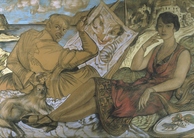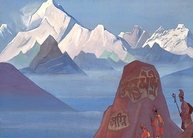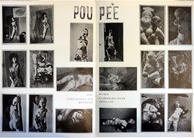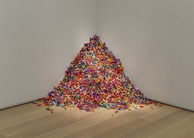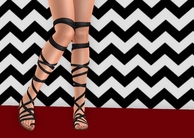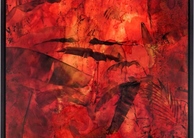Posthuman: Exploring the Obsolescence of the Corporeal Body in Contemporary Art
By
2011, Vol. 3 No. 08 | pg. 1/1
KEYWORDS:
As technology progresses, the rift between organic and mechanic is increasingly made more obscure. This leads one to then ask whether the corporeal body is perhaps out-dated. Is the human corporeal body “obsolete”? An artistic framework provides a site for abstraction and consideration, allowing for the exploration of these questions. Artists and culture producers now not only work with the visual, but also the biological, and the mechanical, effectively exploring the obsolescence of the corporeal body. Corporeal obsolescence is in itself a contentious idea. It is then the place of art to provide a framework for public debate. When discussing transhumanist ideas in an artistic context, one must realise that these artists have transcended the role of cultural producer and have extended themselves into the scientific roles they wish to question.1 Artists such as Stelarc and Eduardo Kac not only represent scientific advancement in their art, but also undertake new forms of research, creating the very advancements they previously commented upon. A key practitioner in posthumanist art is the Australian performance artist, Stelarc. Stelarc’s work deals heavily with “the obsolete body”. The artist does not however suggest that the body is obsolete in the sense that it can be discarded entirely. He instead suggests that humans as a species have created a new technological environment in which we cannot operate effectively as living organisms. The body is obsolete in the sense that it is no longer compatible with its surroundings. We have reached an evolutionary endpoint where the next logical stage of adaptation is for the organic to assimilate the mechanic.In Prosthetics, Robotics and Remote Existence: Postevolutionary Strategies2, Stelarc writes: It is no longer a matter of perpetuating the human species by REPRODUCTION, but of enhancing the individual by REDESIGNING. What is significant is no longer male-female intercourse but human-machine interface. THE BODY IS OBSOLETE. This statement does not mean the body is entirely obsolete, rather, that the corporeal body as an entirely organic form is limited in its potential. Stelarc’s work is concerned with the boundaries and possibilities of the human body.3 This statement suggests that artificial augmentation of the organic life form is necessary to realise the organism’s full potential. Hayles states that “the boundaries of the human subject are constructed rather than given.”4 Expounding upon this, Stelarcian philosophy dictates that the notion of postevolution is one of choice. Stelarc’s work can then be viewed linearly in his engagement with corporeal potential. The artist’s earlier performance work, as demonstrated in Internal/External: Suspension for Obsolete Body featured the artist’s body suspended from hooks through flesh, surrounded by suspended rocks and tree branches. These early performances work to first highlight the fragility of human flesh and forms through the abject stretching and tearing of skin through suspension. Surrounded by natural materials then, demonstrates the human being’s original context. Once the frailty of the organic corpus is then realised, the second layer of performance is made apparent in the artist’s management of pain and bodily reflexes. Pain is controlled, and the body is pushed to its limits within its natural environment. Following this are performances such as Stretched Skin/Third Hand. Natural materials are discarded in favour of electrodes and a third robotic arm. The body is now not only being pushed to its physical limits through suspension, but the body has assimilated mechanical components. The body has evolved artificially, and has incorporated the technological terrain into its very being. These performances work to problematize the body as a functional construct, prompting a need for necessary human-machine incorporation.5 The postevolutionary choice is made apparent, as Stelarc brings to light corporeal obsolescence in the sense that the human organism can no longer function in the environment it has created for itself. As obsolescence has now been established as an incompatibility with the manufactured environment, this essay will now discuss further postevolutionary strategies in the form of tissue art, transgenics and elective corporeal augmentation. Elaborating further upon a point raised in the previous section, prosthetics can be seen to act as a postevolutionary strategy—as shown previously in Stelarc’s work. Prosthetic use builds upon growing technologies in the field of biomimetics, or biological mimicry. External mechanical elements are now being developed to either enhance or replace existing biological functions.6 While robotic prosthetics such as Stelarc’s Third Arm or Exoskeleton demonstrate bodily amplification at a superficial level, full prosthetic augmentation can be seen in his collaboration with The Tissue Culture and Art Project (TC & A), Semi-Living Extra Ear ¼ Scale. In this project, a ¼ scale replica of Stelarc’s ear is grown externally using human cells. This prosthesis is not so much a sign of loss, as much as it is a signifier of excess. Its purpose is not to replace a lost organ—it has been developed as a supplementary addition to the body’s normal function. This prosthesis demonstrates a postevolutionary push beyond corporeal obsolescence through excess. Furthermore, this work comes back to ideas of moving beyond traditional reproduction. Living tissue has been cultivated outside the body and grown to resemble a human body part. This semi-living artefact destabilises the unified body, as reproduction no longer needs to occur within or as part of the corporeal body. 7 This leads on to tissue art and transgenic art. Similarly to ¼ Scale Ear, the projects of TC & A explore the use of living tissue as a means of artistic expression. The work of TC & A creates a site for reflection in the public sphere, considering bioethics. Semi-Living Worry Dolls8 feature tissue grown to resemble Guatemalan worry dolls inside a bioreactor, placed alongside a computer to which people are encouraged to write their worries to the Dolls. This work further destabilises the notion of a unified corporeal body, calling into question its obsolescence whilst also providing a voicing station for contemporary anxiety, especially pertaining to the deconstruction and negation of the human form. Transgenic art serves as a final means of transcending the physical body. The work of Eduardo Kac works closely with genetic material itself, manipulating it beyond what is natural. In Natural History of the Enigma9, Kac has genetically-engineered a new life form, a hybrid between his own DNA and a Petunia flower. Where Stelarc’s work aims to negate the body’s purpose in a contemporary environment, Kac takes a different postevolutionary approach. Instead, Kac injects himself into his natural surroundings, incorporating human elements within its surrounding environment. Instead of developing mechanical means to work against the terrain, Kac has instead forced the environment to assimilate human forms. Prosthetics, tissue art and transgenic practices have been shown to acknowledge corporeal obsolescence, whilst also challenging it. Initially the body may have appeared obsolete however, it has been shown that that is not quite the case. One must ask whether the body is really obsolete, and whether we as a species have in fact reached an evolutionary endpoint. It is actually through the body that the human organism defines and understands reality and the terrain it is attempting to rise against. Merleau-Ponty “places the body at the centre of our relation to the world and argues that it is only though the body that we can truly experience space”.10 Patricia Piccinini’s work holds an ambivalent attitude towards postevolutionary strategies. She states that it is no longer relevant to oppose the artificial to the natural as “the organic is now the stratum through which the cutting edge of technology most regularly passes.”11 She suggests a symbiotic co-dependence between natural and artificial, maintaining that one cannot exist without the other. Piccinini does not proclaim the obsolescence of the body against technology, she suggests it is more so that technology is just becoming increasingly naturalised. Protein Lattice exemplifies this, as we are presented with what appears to be an artificially engineered mouse alongside a “natural” model. Both however are as artificial as the next. The notion of an obsolete body has led artists to question, and effectively problematize the corporeal form. Our push for a utopian body has led to the desire for augmentation and experimentation. The body is not necessarily obsolete, it is just a matter of its limits being pushed, tested, and redefined.
ReferencesBooks Broadhurst, Susan (2007), Digital Practices – Aesthetic and Neuroesthetic Approaches to Performance and Technology, Hampshire, Palgrave Macmillan. pp.86-98 Catts and Zurr (2006), ‘Are the Semi-Living Semi-Good or Semi-evil?’ from Engineering Nature – Art & Consciousness in the Post-Biological Era Bristol, Intellect Books. Pp.77-89 Experimental Art Foundation (2008), “Exhibition Notes” from Art in the Biotech Era, Australia, Experimental Art Foundation Inc. p.174 Goodall, Jane (2005), ‘The Will to Evolve’ from STELARC – The Monograph, Massachusetts Institute of Technology. pp .1-31 Jones, Caroline (2006) ‘Biomimetics’from Sensorium – Embodied Experience, Technology and Contemporary Art, Massachusettts, MIT Press. pp. 115-118 Smyth, Michael (2007), ‘Designing for Embodied Interaction: experiencing artefacts with and through the body’ from The State of the Real – Aesthetics in the Digital Age, London, I.B. Tauris & Co Ltd pp. 140-150 Wilson, Stephen (2006), ‘Corpus’ from Sensorium – Embodied Experience, Technology and Contemporary Art, Massachusettts, MIT Press. pp. 128-132 Journal Articles Stelarc, (1991), ‘Prosthetics, Robotics and Remote Existence: Postevolutionary Strategies’ in Leonardo, Vol. 24, No. 5, pp. 591-595 [online]. Available: http://www.jstor.org/stable/1575667 [Accessed 21 Sept. 2010] Internet Sources Artists Statement for Protein Lattice (online). 1997. Available: http://www.patriciapiccinini.net/pp/plt.htm [Accessed 27 Sept. 2010] Natural History of the Enigma (online), 2009. Available: http://www.ekac.org/nat.hist.enig.html [Accessed 24 Sept. 2010] 1.) Wilson, Stephen (2006), ‘Corpus’ from Sensorium – Embodied Experience, Technology and Contemporary Art, Massachusettts, MIT Press. pp. 128-132 2.) Stelarc, (1991), ‘Prosthetics, Robotics and Remote Existence: Postevolutionary Strategies’ in Leonardo, Vol. 24, No. 5, pp. 591-595 [online]. Available: http://www.jstor.org/stable/1575667 [Accessed 21 Sept. 2010] 3.) Broadhurst, Susan (2007), Digital Practices – Aesthetic and Neuroesthetic Approaches to Performance and Technology, Hampshire, Palgrave Macmillan. pp. 86-98 4.) Broadhurst, Digital Practices, 86 5.) Goodall, Jane (2005), “The Will to Evolve” from STELARC – The Monograph, Massachusetts Institute of Technology. pp . 1-31 6.) Jones, Caroline (2006) “Biomimetics” from Sensorium – Embodied Experience, Technology and Contemporary Art, Massachusettts, MIT Press. pp. 115-118 7.) Experimental Art Foundation (2008), “Exhibition Notes” from Art in the Biotech Era, Australia, Experimental Art Foundation Inc. p. 174 8.) Catts and Zurr (2006), “Are the Semi-Living Semi-Good or Semi-evil?” from Engineering Nature – Art & Consciousness in the Post-Biological Era Bristol, Intellect Books. Pp. 77-89 9.) Natural History of the Enigma (online), 2009. Available: http://www.ekac.org/nat.hist.enig.html [Accessed 24 Sept. 2010] 10.) Smyth, Michael (2007), “Designing for Embodied Interaction: experiencing artefacts with and through the body” from The State of the Real – Aesthetics in the Digital Age, London, I.B. Tauris & Co Ltd pp. 140-150 11.) Artists Statement for Protein Lattice (online). 1997. Available: http://www.patriciapiccinini.net/pp/plt.htm [Accessed 27 Sept. 2010] Suggested Reading from Inquiries Journal
Inquiries Journal provides undergraduate and graduate students around the world a platform for the wide dissemination of academic work over a range of core disciplines. Representing the work of students from hundreds of institutions around the globe, Inquiries Journal's large database of academic articles is completely free. Learn more | Blog | Submit Latest in Visual Arts |












